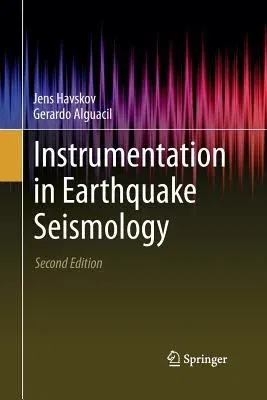CHAPTER 1 Introduction
1.1 Sensor
1.2 Recorder
1.3 Stations and networks
1.4 Arrays
1.5 Instrument correction and calibration
CHAPTER 2 Seismic sensors
2.1 The standard inertia seismometer
2.2 Seismometer frequency response
2.3 Seismometer frequency response, alternative solution
2.4 The velocity transducer
2.4.1 Electromagnetic damping
2.4.2 Polarity convention
2.5 Instrument response curves, different representation
2.6 Sensor response to transient signals
2.7 Damping constant
2.8 Construction of seismic sensors
2.8.1 The Wood Anderson short period torsion sensor
2.8.2 Long period sensors
2.8.3 Garden-gate
2.8.4 Inverted pendulum
2.8.5 LaCoste
2.8.6 Rotational seismometer
2.9 Sensor calibration coil
2.10 Active sensors
2.11 Accelerometers
2.12 Velocity broadband sensors
2.13 Extending the frequency response, inverse filtering and feed back
2.14 Theoretical aspects of active sensors
2.14.1 General response of a feedback system
2.14.2 The basic Force-Balanced Accelerometer
2.14.3 Broadband feedback seismometers
2.14.4 Servo velocity sensors
2.14.5 Other feedback techniques
2.15 Sensor self noise
2.16 Noise in passive sensors coupled to amplifiers, theoretical aspects
2.17 Some new trends in seismic sensors
2.17.1 Seismometers with electrochemical transducers
2.17.2 Micromachined accelerometers and seismometers
2.17.3 Piezoelectric sensors
2.18 Sensor parameters
2.18.1 Frequency response
2.18.2 Sensitivity
2.18.3 Sensor dynamic range
2.18.4 Sensor linearity
2.18.5 Sensor cross axis sensitivity
2.18.6 Sensor gain and output
2.18.7 Sensor adjustments
2.19 Examples of sensors
2.19.1 Exploration type 4.5 Hz geophone
2.19.2 Short period sensorS
2.19.3 Accelerometer, the Kinemetrics Episensor
2.19.4 Broadband sensors
2.19.5 Negative feedback sensors, Lennartz LE-3D
2.19.6 Borehole sensors
2.20 Summary of sensor specifications
2.21 Which sensor to choose
CHAPTER 3 Seismic noise
3.1 Observation of noise
3.2 Noise spectra
3.3 Relating power spectra to amplitude measurements
3.4 Origin of seismic noise
CHAPTER 4 Analog to digital converter
4.1 Example of a simple analog to digital converter, the Flash ADC
4.2 Basic ADC properties
4.3 A typical ADC, the ramp ADC
4.4 Multi channel ADC
4.5 Digitizers for a higher dynamic range
4.6 Oversampling for improvement of the dynamic range
4.7 Sigma Delta ADC, SDADC
4.7.1 How sigma-delta improves digitization noise: theory
4.8 Aliasing
4.9 Anti alias filters
4.10 Dynamic range, different definitions
4.11 Examples of digitizers
CHAPTER 5 Seismic Recorders
5.1 Analog amplifier
5.1.1 Differential input-output
5.2 Analog filters
5.2.1 Amplifier specifications and noise
5.3 Analog recording
5.4 Introduction to digital recorders
5.5 Digitizing
5.6 Time stamping of data

